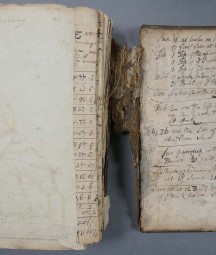by Élodie Lévêque, Project Conservator
An extraordinary manuscript collection; the Ormond Collection has been called the ‘most important Anglo-Norman family archive in Ireland’. It encompasses almost 700 years of Irish history, from the first influx of Norman settlers, to the workings of the feudal system, and the Butler family lordship of almost half of Ireland. A project to conserve and re-house the early 13th century deeds from this collection generously supported by The Ireland Funds and the NLI Trust is under way.
These deeds are legal manuscripts that detail the transfer of land ownership from one person to another. Most are handwritten in Latin on parchment (sheep) and many have wax seals - the 13th century ‘rubber stamp’ - verifying their legal status. The project began with assessing the condition of the parchments: many had mould damage, persistent folds and tears, and the original wax seals were broken or had significant losses.

An Ormond Deed creased and curling before treatment
Parchment is made from limed animal skin; including calfskin, sheepskin or goatskin. Before the widespread use of paper, parchment was the most common material for writing for over a thousand years. Parchment making isn’t something you come across every day, so this BBC documentary clip might interest those who’d like to know more. It is an incredibly strong and smooth support, so why had these parchments suffered so? The answer is the damp Irish weather!
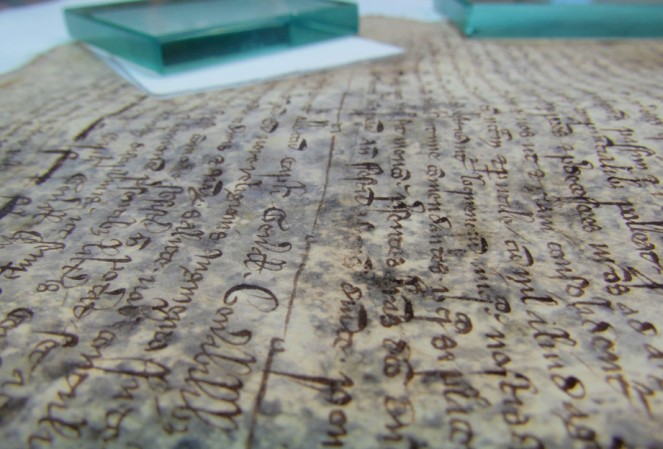
Mould has stained this deed, making a black and blotchy pattern on the parchment
Much like our own skin, parchment is incredibly sensitive to moisture and consistently absorbs and releases it. In fact parchment contains 14% water molecules, twice that of average paper. The moisture is held in organic tissues by adsorptive forces and lubricates the collagen fibres making the parchment flexible. This means that if parchment is folded up and put in a dry space, it loses moisture and ‘dries’ into the folded shape, making it very difficult to unfold and read. Equally, if placed somewhere very humid for some time, it will absorb and hold this moisture, creating a damp organic substrate - perfect conditions for mould!
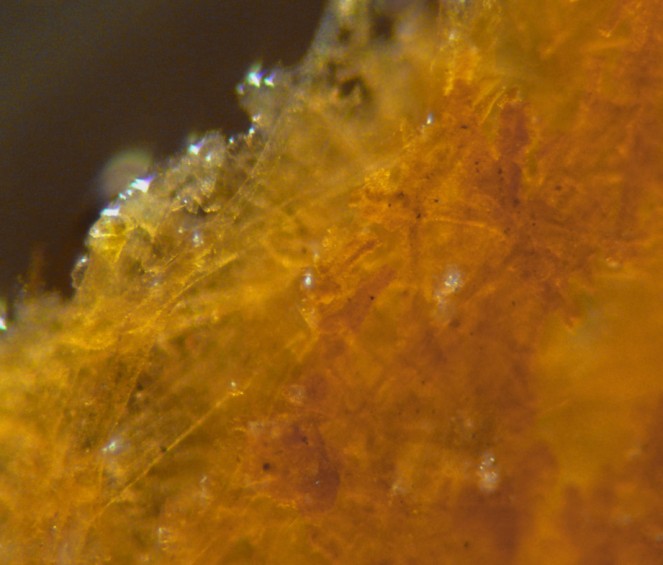
Magnified close-up of collagen fibres
Conservation treatments were undertaken to flatten and re-house some of the deeds - but removing the creases can be a tricky affair! Full-blown exposure to liquid water can permanently destroy the parchment altogether. It causes gelatinisation of the fibre structure, which makes the parchment translucent and brittle.
Controlled humidification techniques were used to introduce water vapour to slowly relax the collagen fibres in the parchment. The original parchment makers would have stretched the parchment in a frame, drying it like a drum. While not quite so dramatic, light tensioning methods, incorporating the use of magnets and elastics were also used for these fragile items. The deeds were then left to dry very slowly under controlled weight.
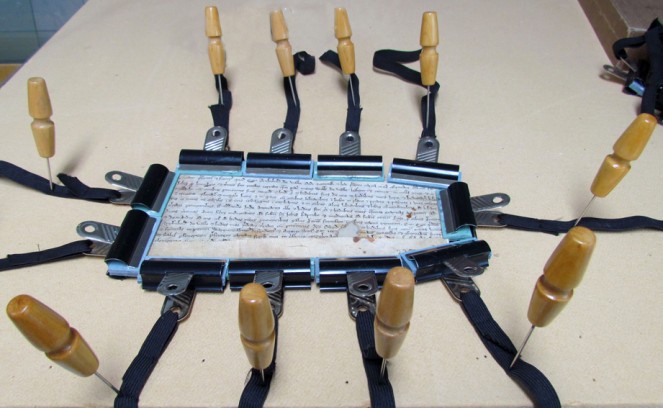
A repaired deed is dried under tension - the black elastics have some ''give''
For the mould-damaged deeds, interventive treatment stabilised confetti-like areas of parchment where the mould enzymes had consumed the protein and fat tissues in the skin. The mould also released chromophores (molecular groupings which cause a characteristic colour) which permanently stain the parchment with irregular grey, black and even pink blotches!
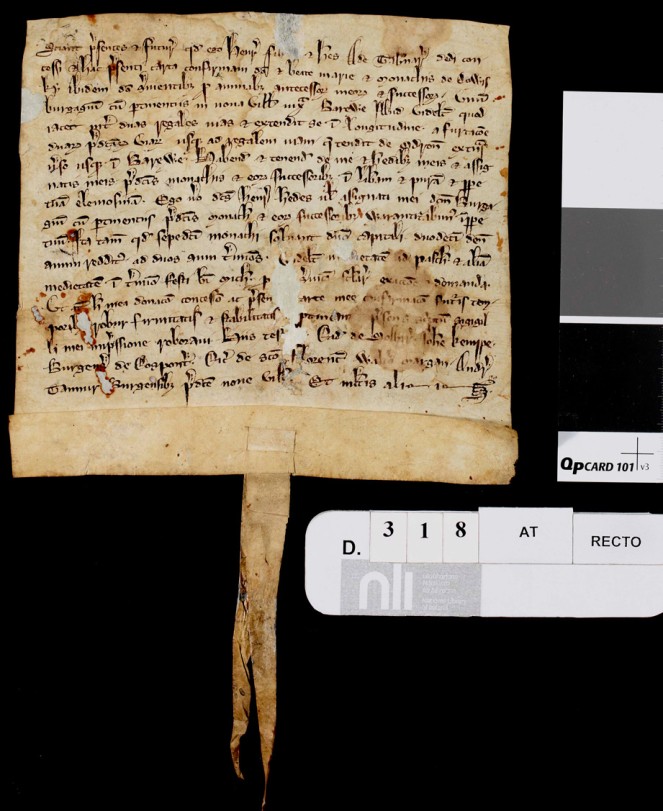
After treatment, the text of the deed is now clearly visible
Any conservation treatment aims to use the least interventive means of stabilising the object by using reversible and sympathetic materials – fixing like with like. A second support of ‘goldbeater's skin’, a very thin parchment made of the outer membrane of calf's intestine, was applied with tepid gelatine solution to these areas and along tears. Missing areas of the deeds were infilled with a specially sourced thin lamb parchment to match the original skin which is incredibly almost 0.3mm thin!
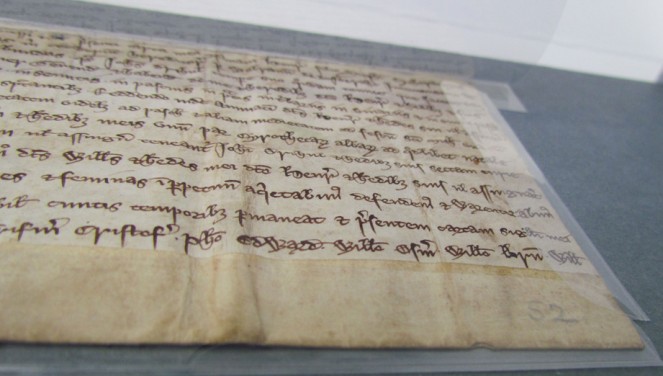
Parchment in new storage with Mylar strip holders
Integral to the original function of the deeds, the wax seals also needed conservation as the beeswax had essentially dried out and fragmented. The broken seals were put back together or consolidated with soft beeswax repairs, toned with pigments to match the original colours.

After treatment, one of the Ormond Deeds in its new purpose-fit housing
Once conserved, scholars can now easily access previously hidden text by viewing digital images of the objects. This removes any damaging consequences from direct handling. A new housing system made of archival quality materials was also designed for the whole collection. This helps protect the fragile wax seals with custom protective cushioning while Mylar strips help keep the parchment tensioned - reducing the natural urge of the skins to curl back into a sheep!
A detailed transcription calendar of these Ormond deeds up to the seventeenth century was published in five volumes by the Irish Manuscripts Commission between 1932 and 1943, and is also available online.

This conservation project has been generously support by The Ireland Funds
